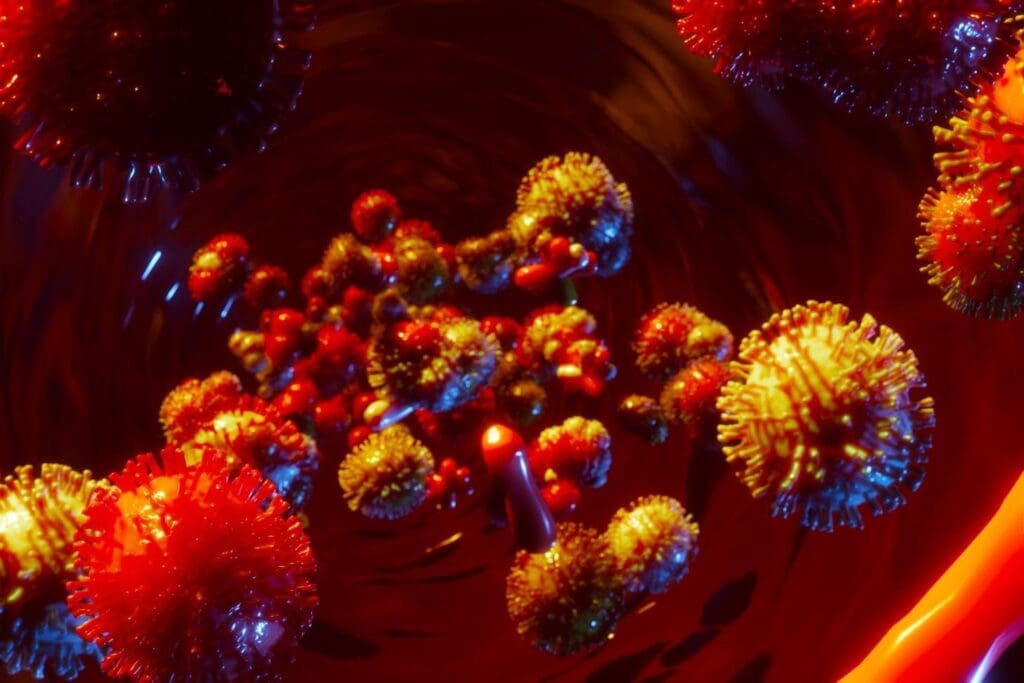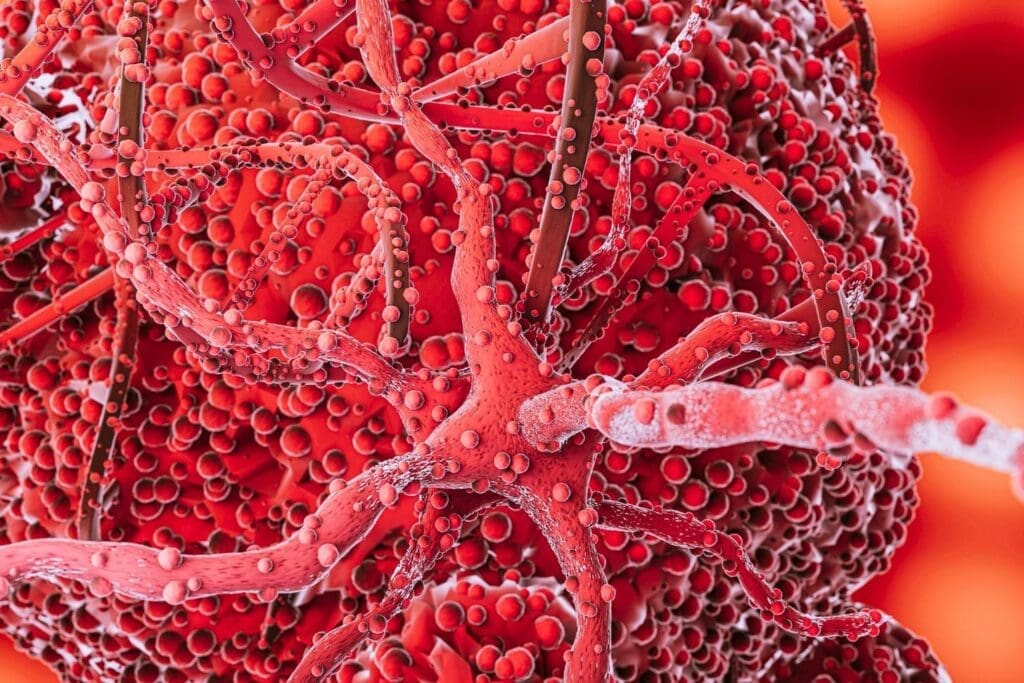Last Updated on November 26, 2025 by Bilal Hasdemir

At Liv Hospital, we know how worried you might be about a benign tumor diagnosis. Benign tumors are noncancerous growths that usually stay in one place. But sometimes, they can change and become cancerous. It’s important to know the difference between benign and malignant tumors for early detection and treatment.
We will look into the main points about malignant transformation of benign tumors. This includes how cancerous transformation happens and why it’s key to understand the difference between benign and malignant tumors. Our care is focused on you, aiming to guide you through this challenging time.
Key Takeaways
- Benign tumors are noncancerous growths that can potentially become malignant.
- Understanding the difference between benign and malignant tumors is key.
- Malignant transformation of benign tumors is a complex process.
- Early detection and timely medical evaluation are vital.
- Patient-centered care is essential for supporting patients through this process.
Understanding Benign Tumors: Definition and Characteristics

A benign tumor is a non-cancerous growth that doesn’t spread. We’ll look at what makes a tumor benign, including how it grows and its types.
What Makes a Tumor Benign
Benign tumors are non-cancerous and don’t invade nearby tissues. They are non-invasive and don’t spread. This is different from malignant tumors, which can spread.
Benign tumors have a few key features:
- They grow slowly
- They have clear borders
- They don’t invade nearby tissues
Common Types of Benign Tumors
There are many types of benign tumors, each unique. Some common ones are:
- Adenomas, which grow from glandular tissue
- Fibroids, which grow in the uterus
- Lipomas, which are fatty tumors
These tumors can appear anywhere in the body. Their symptoms depend on where they are and how big they are.
Typical Growth Patterns
Benign tumors grow slowly and may stay the same size for years. They are often encapsulated, meaning they have a fibrous capsule. This capsule keeps them separate from other tissues.
Cysts are usually filled with fluid and might go away on their own. While both cysts and tumors can be benign, they grow and act differently.
The Nature of Malignant Tumors

Malignant tumors are a serious health concern. They can invade surrounding tissues and spread to distant sites. We will look at their characteristics, how they affect the body, and what makes them different from benign tumors.
Define Malignant Tumor: The Cancer Connection
A malignant tumor is a cancerous growth. It can invade nearby tissues and spread to other parts of the body. This makes malignant tumors different from benign ones, which are usually non-cancerous and don’t spread.
Identifying Features of Malignant Masses
Malignant masses grow uncontrollably and invade surrounding tissues. They can also spread to other parts of the body. These tumors can harm the body by disrupting normal tissue function and spreading to vital organs. It’s important to identify these features early for effective treatment.
How Malignant Tumors Affect the Body
Malignant tumors can have a big impact on the body. As they grow and spread, they can cause symptoms like pain, fatigue, and organ dysfunction. In severe cases, they can lead to life-threatening complications. It’s key to understand how malignant tumors affect the body to develop effective treatment plans.
Can Benign Tumours Turn Cancerous? The Process Explained
Benign tumors are not cancerous but can turn cancerous. This change is complex and worrying. It’s important to know how and why this happens.
The Science Behind Malignant Transformation
Malignant transformation happens when a benign tumor’s cells change genetically. This leads to uncontrolled growth and the chance to spread to other areas. It’s a series of molecular changes that mess with normal cell control.
Genetic changes, like mutations in oncogenes and tumor suppressor genes, are key. These genes help control cell growth and DNA repair. When they’re mutated, cells grow out of control, raising the risk of turning cancerous.
Key factors driving malignant transformation include:
- Genetic predisposition
- Environmental exposures
- Hormonal influences
- Chronic inflammation
Risk Factors for Cancerous Conversion
Several factors can make a benign tumor turn cancerous. Knowing these factors helps catch problems early and prevent them.
Significant risk factors include:
- Family history of cancer
- Previous radiation exposure
- Certain genetic syndromes
- Age and hormonal status
Timeframe for Malignant Transformation
The time it takes for a benign tumor to turn cancerous varies. It depends on the tumor type, individual risk factors, and genetic mutations. Some tumors stay benign for years, while others change quickly.
Regular check-ups are key to spotting any tumor changes. Catching a tumor’s transformation early can greatly improve treatment results.
Benign vs. Malignant: Key Differences in Tumor Behavior
It’s important to know the difference between benign and malignant tumors. This knowledge helps in early detection and treatment. The way these tumors behave can greatly affect treatment plans and patient outcomes.
Cellular Structure and Appearance
Benign tumors look a lot like normal cells. Malignant tumors, on the other hand, have abnormal cells. These abnormal cells are a sign of cancer.
Growth Rate and Patterns
Benign tumors grow slowly and stay in one place. Malignant tumors grow fast and can spread to other areas. How a tumor grows is key to knowing if it’s malignant.
Invasion and Metastasis Capabilities
Benign tumors don’t spread to other parts of the body. Malignant tumors can break away and travel to other areas. This is a big difference in how they behave.
| Characteristics | Benign Tumors | Malignant Tumors |
| Cellular Structure | Resemble normal cells | Abnormal cell structure |
| Growth Rate | Slow-growing | Rapid growth |
| Invasion and Metastasis | Localized, no invasion | Invasive, can metastasize |
Knowing these differences helps patients and doctors spot risks early. This leads to better treatment and outcomes.
Common Benign Tumors with Malignant Potentials
Benign tumors can sometimes turn into cancer. It’s key to know about these tumors. They can become dangerous if not watched closely.
Colon Polyps and Colorectal Cancer Risk
Colon polyps grow on the colon or rectum’s inside. Most are harmless. But, some polyps, like adenomatous ones, can turn cancerous.
The chance of a polyp becoming cancer depends on its type, size, and if it has dysplasia.
Key Facts About Colon Polyps:
| Type of Polyp | Cancer Risk | Characteristics |
| Adenomatous Polyps | High | Can progress to cancer if not removed |
| Hyperplastic Polyps | Low | Generally not considered precancerous |
| Serrated Polyps | Variable | Some types have a higher risk of cancer |
Uterine Fibroids and Rare Malignant Transformation
Uterine fibroids are common in the uterus. They’re usually not cancerous. But, there’s a small chance they could turn into leiomyosarcoma.
It’s hard to know which fibroids might become cancerous. So, it’s important to watch them closely, even more so if you have a family history of cancer.
Skin Moles and Melanoma Development
Skin moles are usually harmless. But, some can turn into melanoma, a serious skin cancer. UV radiation, atypical mole syndrome, and family history of melanoma increase this risk.
It’s important to check your skin regularly. This helps catch any moles that might become melanoma early.
Other High-Risk Benign Growths
Some benign growths can also become cancerous. GISTs and benign lung nodules are examples. They need careful monitoring.
The Genetic Basis of Malignant Transformation
Understanding the genetic causes of cancer is key to preventing it. We’ll look at how genetic changes, certain genes, and family history affect the risk of tumors turning cancerous.
DNA Mutations and Cancer Development
DNA mutations are a main cause of cancer. These can happen from environmental factors, DNA copying errors, or viruses. When a benign tumor turns cancerous, it’s often due to these DNA changes disrupting cell control.
Key types of DNA mutations involved in cancer include:
- Point mutations, which affect a single nucleotide
- Insertions or deletions, which can lead to frameshift mutations
- Chromosomal rearrangements, which can result in the formation of oncogenic fusion genes
Oncogenes and Tumor Suppressor Genes
Oncogenes and tumor suppressor genes control cell growth and division. Oncogenes, when mutated or overactive, can cause cancer by promoting too much cell growth. Tumor suppressor genes, by contrast, help prevent cancer by fixing DNA mistakes or causing cells with damaged DNA to die.
The balance between oncogenes and tumor suppressor genes is vital for keeping cells healthy. When this balance is lost, it can lead to cancer.
| Gene Type | Normal Function | Cancer-Related Alteration |
| Oncogenes | Promote cell growth and division | Mutation or overexpression leading to excessive cell proliferation |
| Tumor Suppressor Genes | Repair DNA mistakes or initiate apoptosis | Mutation or underexpression leading to uncontrolled cell growth |
Hereditary Factors in Transformation Risk
Hereditary factors can greatly increase a person’s cancer risk. Some genetic syndromes, like Li-Fraumeni syndrome and familial adenomatous polyposis, raise the risk of benign tumors becoming cancerous.
Knowing your family history and genetic risk can help you take steps to prevent cancer.
Warning Signs That a Benign Tumor May Be Changing
It’s important to know when a benign tumor might turn into a cancer. We’ll look at the signs that show a benign tumor could be changing.
Physical Changes to Monitor
Watch for changes in size, shape, or color of a benign tumor. These changes could mean it’s turning into cancer. If a tumor grows fast or changes color, it might be turning cancerous.
It’s key to notice any changes and tell your doctor. Regular checks and self-exams can catch these signs early.
New Symptoms That Shouldn’t Be Ignored
New symptoms or changes in old ones can mean a tumor is turning cancerous. Pain or discomfort in the tumor area is a warning. Also, changes in bowel or bladder habits could mean the tumor is pressing on these organs.
Knowing your body’s normal and reporting new symptoms to your doctor is vital. Catching these changes early can greatly improve treatment results.
When to Seek Immediate Medical Attention
Some symptoms need immediate help. Severe pain, trouble swallowing, or sudden vision changes are urgent. If a benign tumor causes these symptoms, get help fast.
Knowing when to get medical help is critical. Always talk to your doctor if you have unusual or concerning symptoms.
Diagnostic Approaches for Tumor Assessment
Tumor assessment uses advanced methods to understand tumors. Accurate diagnosis is key for good treatment. We’ll look at how to assess tumors, including imaging, biopsies, lab tests, and new cancer detection tech.
Imaging Techniques
Imaging is vital for checking tumor size, location, and type. MRI and CT scans help see how tumors affect nearby tissues. These tools help doctors plan the best treatment.
Biopsy Procedures
Biopsies take tissue samples from tumors for detailed analysis. Needle biopsies and surgical biopsies are common methods. The results help doctors know if a tumor is cancerous.
Laboratory Tests
Laboratory tests find cancer markers and study tumor biology. Blood tests look for specific markers. Molecular tests find genetic changes that affect tumor behavior and treatment.
New Technologies
New tech is changing cancer detection. Liquid biopsies check for tumor DNA in blood without surgery. Other advances include artificial intelligence in imaging and next-generation sequencing for tumor genetics.
Using many diagnostic methods helps doctors understand tumors better. This leads to more personalized treatment plans and better patient care.
In summary, diagnosing tumors involves many important steps. Imaging, biopsies, lab tests, and new tech help doctors create effective treatment plans. This approach improves how we manage tumors.
Treatment Options for Benign Tumors with Malignant Potential
It’s important to know the treatment options for benign tumors that could turn cancerous. This knowledge helps in preventing cancer. Managing these tumors well can lower the risk of cancer.
Preventive Surgical Approaches
Preventive surgery is a direct way to handle benign tumors with a chance of becoming cancer. For example, taking out colon polyps during a colonoscopy stops colorectal cancer. Also, removing uterine fibroids, big or causing symptoms, lowers the risk of cancer.
Preventive surgery offers many benefits:
- It lowers the chance of cancer
- It eases symptoms from the tumor
- It gives a clear diagnosis through tissue tests
Monitoring Protocols for High-Risk Tumors
Not every benign tumor needs surgery right away. Sometimes, watching and waiting with regular checks is better. This means doing imaging tests like ultrasounds or MRIs to see how the tumor grows and changes.
Monitoring is good for:
- Small, symptom-free tumors
- Tumors in tricky spots
- People who face big risks with surgery
Medication Options to Reduce Transformation Risk
Medicine can also help lower the risk of these tumors turning cancerous. For example, some hormones can make uterine fibroids smaller, which might lower their cancer risk. Also, drugs that fight inflammation or change the immune system can help with some benign tumors.
Choosing medication depends on:
- The type and size of the tumor
- The patient’s health and past medical issues
- The drug’s benefits and risks
By using these treatments, people with benign tumors at risk for cancer can lower their cancer risk a lot. This approach combines medical knowledge with care tailored to each person for the best results.
Living with Benign Tumors: Management Strategies
Managing benign tumors is key to avoiding cancer and improving life quality. We’ll look at strategies for living with benign tumors. This includes regular screenings, lifestyle changes, and the mental side of monitoring tumors.
Regular Screening Recommendations
Regular checks are vital for managing benign tumors. They help spot any signs of cancer early. Here are some screening tips:
- Annual check-ups with your healthcare provider
- Regular imaging tests (e.g., ultrasound, MRI) as advised by your doctor
- Keeping a record of any changes in the size or characteristics of the tumor
Screening Frequency depends on the tumor type and your risk factors. For example, those with a family history of cancer might need more tests.
| Tumor Type | Recommended Screening Frequency | Imaging Tests |
| Fibroids | Every 6-12 months | Ultrasound |
| Skin Moles | Every 3-6 months | Visual Examination, Dermoscopy |
| Colon Polyps | As recommended by gastroenterologist | Colonoscopy |
Lifestyle Modifications to Reduce Risk
Changing your lifestyle can help manage benign tumors and lower cancer risk. Here are some tips:
- Eat a healthy diet full of fruits, veggies, and whole grains
- Stay active with regular exercise
- Don’t use tobacco and limit alcohol
- Use stress-reducing activities like meditation or yoga
Healthy lifestyle choices can lower cancer risk and boost overall health.
Psychological Aspects of Tumor Monitoring
Living with benign tumors can cause anxiety and stress. It’s important to tackle these feelings through:
- Counseling or therapy
- Support groups
- Learning about your condition and its management
Understanding benign tumors and actively managing them can reduce anxiety. This improves your quality of life.
Medical Advances in Understanding Tumor Transformation
Recent research has greatly improved our understanding of how benign tumors turn into cancer. This knowledge is key to creating better treatments for cancer patients.
Our approach to tumor transformation is changing thanks to new research. These advances help us understand the genetic changes that lead to cancer. They also lead to more personalized treatments.
Recent Research Breakthroughs
Studies have found that certain genetic changes are key in turning benign tumors into cancer. For example, a study on Ki-67 prediction in breast cancer shows how radiomics can help understand tumor behavior.
Key findings include the discovery of biomarkers that can predict cancer transformation. These biomarkers are vital for early detection and treatment.
Emerging Predictive Biomarkers
The search for predictive biomarkers is a major area of research. These biomarkers could change how we diagnose and treat tumors. For instance, some proteins and genetic markers can spot cancer cells before symptoms show.
Experts say biomarkers could greatly improve patient outcomes. At Liv Hospital, diagnosing cancerous tumors often involves imaging and biopsy results.
Personalized Medicine Approaches
Personalized medicine is a big step forward in cancer treatment. It tailors treatment to each patient’s tumor, making treatments more effective and reducing side effects.
Tailoring treatment means understanding the tumor’s genetics and choosing therapies that target specific mutations. This approach not only improves treatment results but also helps in ongoing research on tumor transformation.
Conclusion: Key Takeaways About Benign to Malignant Transformation
It’s important to know how benign tumors can turn malignant. We’ve looked at the differences between these two types of tumors. We’ve also talked about the risk factors and how to spot cancerous changes early.
Knowing the signs of a tumor changing can help prevent cancer. Regular check-ups and healthy habits are key. We also discussed the emotional side of watching a tumor.
Our talk about the genetic causes and new medical findings shows how complex cancer is. As we learn more, we see the need for a full approach to fight cancer.
In short, knowing about benign to malignant transformation helps people take care of their health. This leads to better health results.
FAQ
What does it mean when a benign tumor turns malignant?
When a benign tumor turns malignant, it changes from a noncancerous growth to a cancerous one. This can lead to it spreading to other parts of the body.
Can all benign tumors turn malignant?
No, not all benign tumors can turn malignant. But some, like colon polyps and uterine fibroids, have a higher risk.
What are the risk factors for a benign tumor to become malignant?
Risk factors include genetic mutations, family history, and certain genetic predispositions. Also, exposure to environmental carcinogens can increase the risk.
How can I identify if a benign tumor is turning malignant?
Look out for signs like rapid growth, pain, or bleeding. Also, changes in the tumor’s appearance can be a warning.
What diagnostic approaches are used to assess tumors?
To assess tumors, doctors use MRI and CT scans, biopsies, and lab tests. New technologies in cancer detection are also being used.
Are malignant tumors always cancerous?
Yes, malignant tumors are cancerous. They can spread to other parts of the body, causing serious health issues.
What is the difference between benign and malignant tumors?
Benign tumors are noncancerous and usually don’t spread. Malignant tumors are cancerous and can spread, causing serious health problems.
Can benign tumors be treated to prevent malignant transformation?
Yes, treatments like surgery, monitoring, and medication can help prevent cancerous transformation in benign tumors.
How can I manage living with a benign tumor?
To manage living with a benign tumor, follow screening recommendations and make lifestyle changes. Also, address the emotional side of tumor monitoring.
What are the latest medical advances in understanding tumor transformation?
New research, predictive biomarkers, and personalized medicine are helping us understand tumor transformation better. This leads to better treatments.
What is the role of genetics in malignant transformation?
Genetics play a big role in tumor development and progression. Genetic mutations and predispositions can increase the risk of malignant transformation.
References:
• National Center for Biotechnology Information. (n.d.). *The Cell: A Molecular Approach*. Retrieved from https://www.ncbi.nlm.nih.gov/books/NBK9963/
• Healthline. (2021). *Can Benign Tumors Become Malignant?* Retrieved from https://www.healthline.com/health/cancer/can-benign-tumors-become-malignant
• Wikipedia. (n.d.). *Malignant transformation*. Retrieved from https://en.wikipedia.org/wiki/Malignant_transformation
• Radiopaedia.org. (n.d.). *Malignant transformation | Radiology Reference Article*. Retrieved from https://radiopaedia.org/articles/malignant-transformation?lang=us
• Medical News Today. (2019). *Difference Between Benign And Malignant Tumors*. Retrieved from https://www.medicalnewstoday.com/articles/249141






